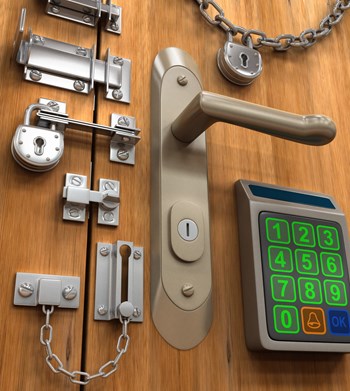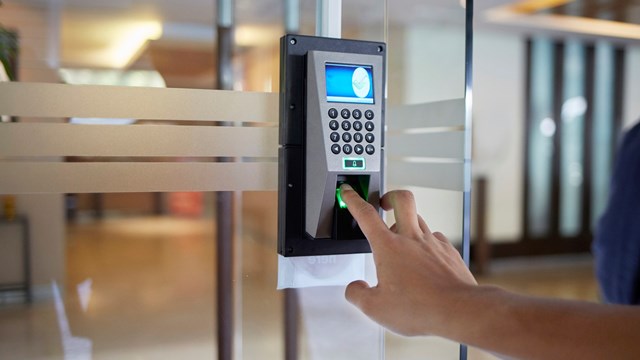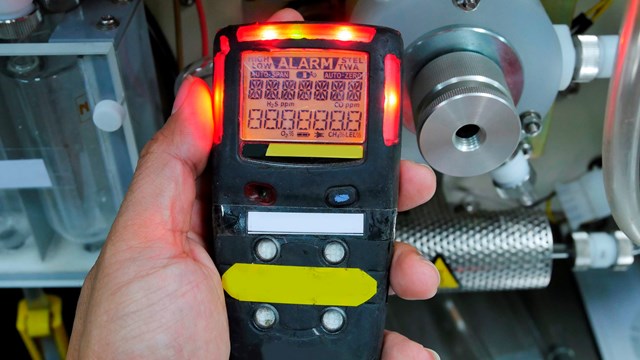
Education, awareness, and cooperation between management, boards, and residents can make a huge difference in deterring crime in and around a building. Some basic behavioral adjustments – such as making sure nobody follows you into the building without a key, or not buzzing in any unknown or unexpected visitor – seem like common sense. But a community that educates itself on the how and why of certain safety measures has a better chance of enforcing them once they know the reason behind them. Taking mutual interest and joint responsibility in keeping a building safe will go a long way in maintaining the kind of culture that discourages intruders and perpetrators without making residents feel like they’re living in Fort Knox.
Roles to Play, Measures to Take
When it comes down to it, building safety is a shared responsibility even in terms of legal obligations. Dr. Mark Lerner, President of Manhattan-based Epic Security Corp., says that outside of basic mandates for an intercom and front door locking system, buildings are not responsible for fulfilling any specific security requirements. However, “In terms of liability, if something occurs and it is found that the board or residents were aware of avoidable high-risk factors—if there’s a history of stuff happening, then a building could face civil action.”
The board, management, and residents have a mutual stake in making sure a building is doing everything it can to deter crime, and that means not only paying attention to unique opportunities that might present potential vulnerabilities, but also day-to-day vigilance. According to Alon Alexander, President of security firm Kent Services, which has an office in New York City, “The board should be aware of security issues within the building, as well as the surrounding areas. They should take precautions when certain types of events are occurring in the area, such as a Fourth of July fireworks display or a block party. They should arrange for extra staff or security as needed. All building residents should part take in basic security as well, locking their door and making sure ‘tailgaters’ don’t gain entry. If they see someone or something suspicious, they should bring it up to management.”
Basics Within Any Budget
When contemplating security for a large multifamily building or sprawling association, it can seem like any initiative or program is likely to be expensive and laden with hassles – but that’s simply not the case. Some of the most rudimentary and affordable adjustments can be made almost immediately, and fortified by the people who have the most intimate knowledge of the community and its particular features: the residents themselves.
“Boards can create security committees and have ongoing discussion regards to security,” says Alexander. “They can alert residents of any known crime in the area or the building itself. At Kent, we take part in monthly meetings and update board members of recent crime in the area.”
Beyond thoughtful and engaged education practices, building communities need to make sure basic maintenance is also maintained. “One thing many people overlook is lighting,” says Alexander. “Buildings should be well lit, again in order to dissuade crime.”
Brian Arenofsky, Director of Business Development for BH Security, which serves New Jersey, Pennsylvania, and the greater New York metropolitan area, emphatically concurs with Alexander’s comments on proper lighting. “The one thing I say when I speak at HOA meetings is something that doesn’t make me a dime: lots and lots of lights.” This may seem like the most basic and obvious of precautions, but just a little bit of extra attention to how vital this step is can make a huge difference in overall building safety. “That’s another thing that falls on residents,” says Arenofsky. “When lights go out, they have to report it.” Advances in green conservation technology also helps this small step to be a very low cost one as well. “With LED lights,” he adds, “they don’t burn out as fast, and there’s a lot of programs with utilities companies to help subsidize or incentivize a conversion.”
Getting What You Pay For
Lerner advises that very few measures are as successful a deterrent to crime in a residential building than the addition of uniformed security staff. “I’m also a Ph.D. criminologist,” he says, “so speaking from the science and research that is conducted to look into this, having a uniformed guard is a great deterrent, whereas video surveillance is not. Closed-circuit technology is extremely useful in solving crimes, but research shows that criminals are not deterred by closed-circuit TV. Most of the research shows that seeing uniformed personnel is a large deterrent.”
Lerner does not dismiss the importance of video surveillance, but stresses what can realistically be expected with such measures. “Everybody should have closed-circuit TV – that will tell you the history of the building. But if you want to stop the crime from happening in the first place, you need people in there on a regular basis.” He adds that a uniform can range from the classic doorman blazer to a police-style security guard uniform, depending on the culture of the building and type of security requested, but it seems the type of uniform does not matter as much as the fact of the uniform itself. It actively sends the signal that someone is paying attention to the safety of the building. The hassle of overcoming that attention and vigilance is just not worth it when it comes to some potential acts of crime.
For his part, Arenofsky emphasizes that having the right security system can make a big difference as well, and adds that there are lots of upgrades and additions to existing systems that can help keep building support staff aware of what is going on around the property. “When it comes to surveillance there’s a wide range, so we like to find out what kind of budget can be allotted,” he says. “[The right system] will prevent some crime...and so will knowing the hot spots of a community by speaking to boards and HOAs, practicing basic situational awareness, and the ability to identify a perpetrator. It can make a big difference.”
When it comes to electronic security and surveillance, Arenofsky says, “In this case, truly the more you spend the more you get, just down to basics like camera resolution and how important that can be in terms of positively identifying a perpetrator.”
What to Look For
While it can sometimes be tough to spot the hallmarks of certain types of criminal activity, residents, board members, and managers should be aware of some warning signs that might indicate that something fishy is afoot in their building. High traffic to individual apartments – particularly at odd hours of the day – is something residents should to bring to the attention of management, says Lerner. “It could be anything from teenagers selling marijuana to high level prostitution services,” he says. But no matter what the reason is, the result of significant non-resident building traffic is the same: increased risk to the building. Heavy guest traffic can also severely lessen the impact of having uniformed personnel on staff.
“Lately one of the biggest security problems is Airbnb,” Lerner adds, touching on a topic that’s already the subject of heated debate in many multifamily residencies. “Situations where strangers are coming into the building, it’s a big threat. Many buildings don’t allow it, but in fact, by allowing multi-tenant housing residents to use their homes for short term rentals, security risks go way up.”
While many on both sides of the short term rental issue would love to find a swift and fair solution, presenting and emphasizing the security risk that it poses not only to home-sharing ‘hosts,’ but to the building at large, a board can actively work towards getting residents and owners more thoughtfully engaged in reporting and stopping short term rentals.
“Residents should be aware of high traffic apartment activity, and neighbors should report to management and follow up,” says Lerner, though he makes a distinction between vigilance of this sort and any sort of volunteer or neighborhood watch type security organization. “When you have something like that going on,” he explains, “you have to consider that the kind of horrible situation [involving George] Zimmerman [the man who fatally shot unarmed teen Trayvon Martin in 2012 and was later acquitted of murder and manslaughter charges] could result. The legal liability you are taking on by self-monitoring is truly not worth the risk.”
Even a confident neighbor with formal security training should go through other, more official avenues for addressing suspected illegal behavior in their building. The pros are unanimous in strongly discouraging individual residents from pursuing direct confrontation with a possibly ill-intentioned or guilty party. Such interactions could go wrong in a way neither party anticipates or hopes for.
“Stuff happens with security,” says Lerner. “People push back when threatened.” He advises that any building community interested in forming a self-monitoring model should check with their building attorney and insurance to get a clear picture of the pros, cons, and potential costs.
“You can use volunteers,” says Lerner. “It’s not illegal on its face, but extreme liability issues could come up.” Basic vigilance and a good relationship between residents and management, as well as an understanding of the responsibilities and roles of both sides in maintaining the right balance in a building is something that both residents and management teams can work towards. “Reporting unusual activity is different than stepping into an intervention situation,” says Lerner, “Residents should be conscientious and report; management should approach.”
By emphasizing strong community engagement, awareness, and education practices, boards and management can empower their residents and owners to assume a collaborative responsibility in the overall security of their building or association. Paired with the right technologies and amenities, this approach can help a building to avoid being a target. Bad things can happen no matter how vigilant and preemptive a building is, but in the long run, being proactively engaged in working towards the peaceful balance of a residence can make all of the difference in protecting the residents and their property.
K. Valada is a freelance writer and frequent contributor to The Cooperator.









Leave a Comment